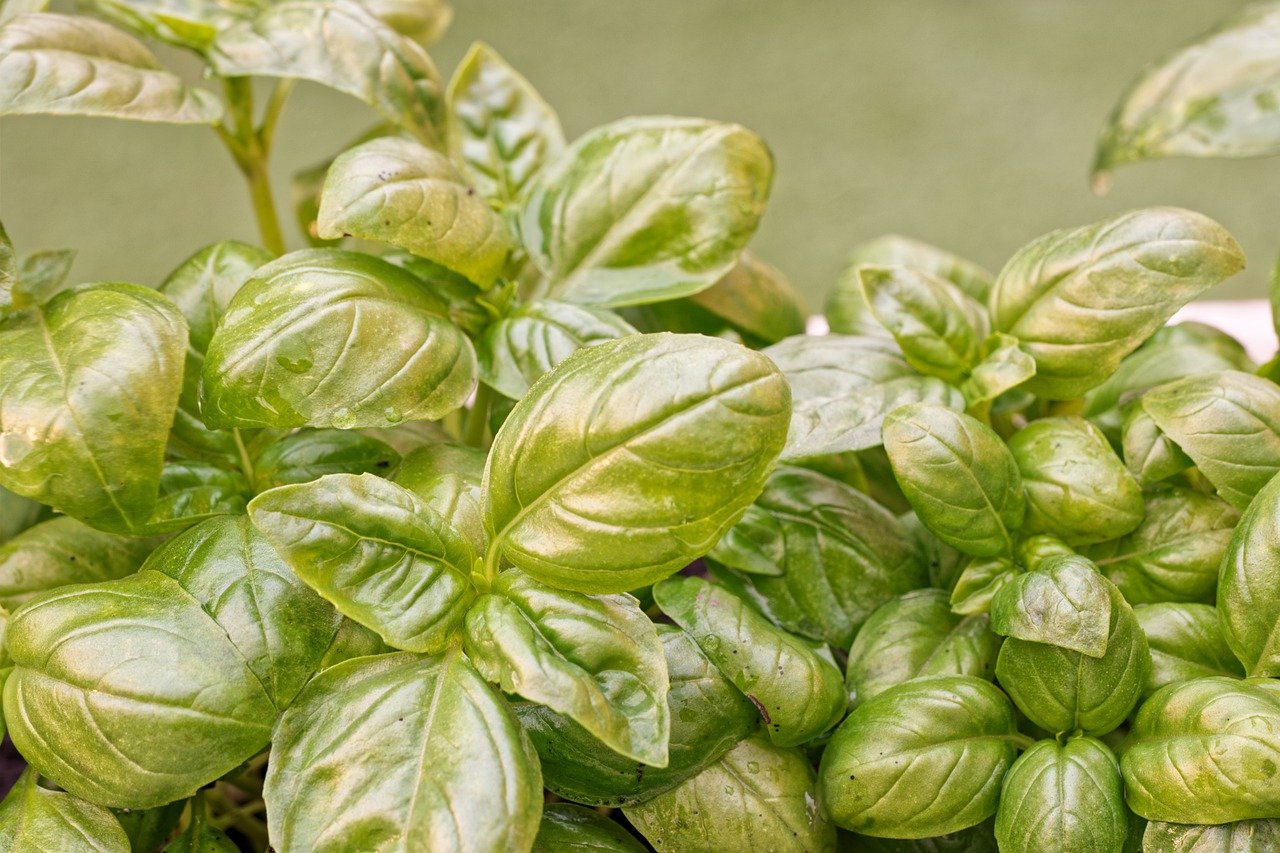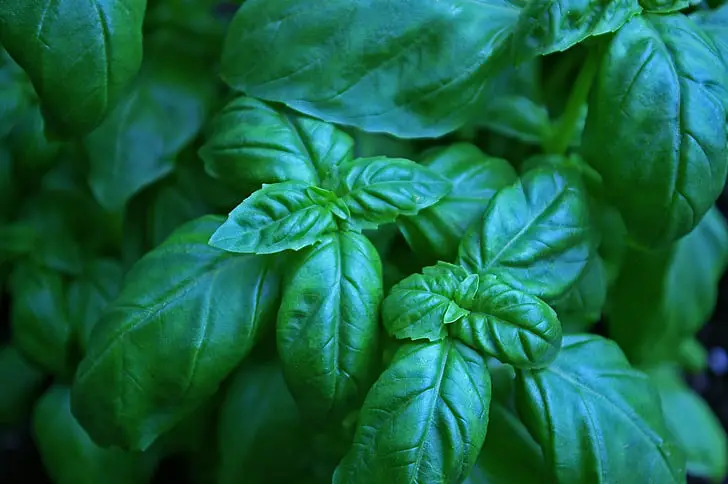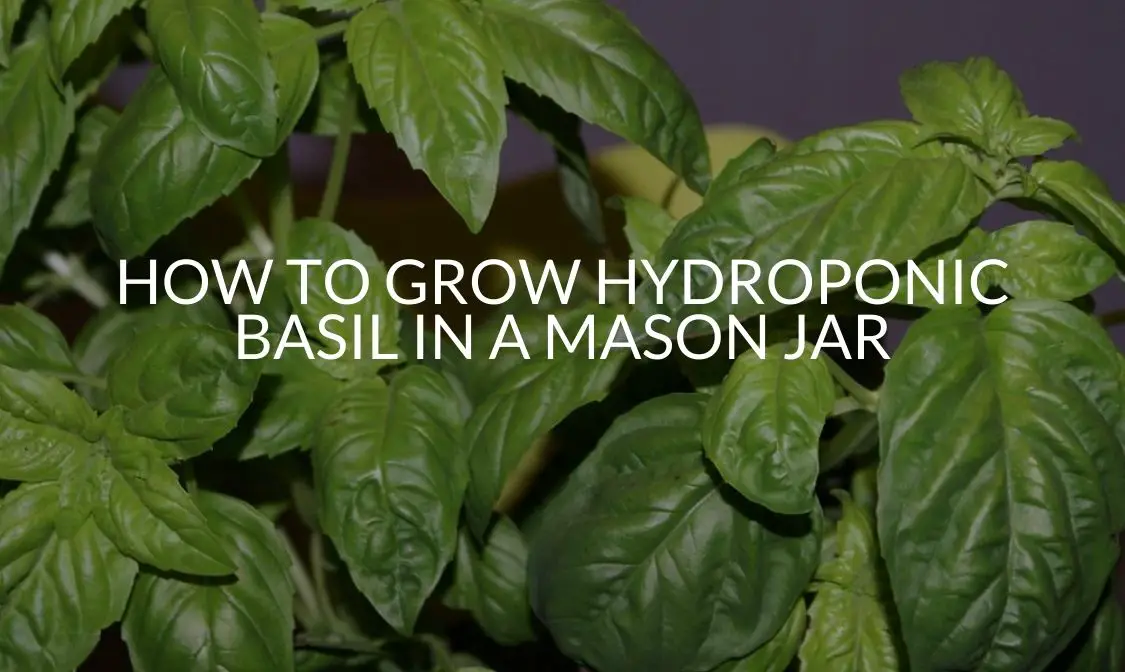Have you ever wanted to try growing plants hydroponically? The Kratky method for growing hydroponic basil in a mason jar is a great way to get started. The method is simple and very friendly for beginners. We will discuss what you will need to get started and best practices for growing hydroponic basil.
Not only will you get to grow plants indoors using minimal resources, but you will have a culinary giant gracing your life regularly.
Can Basil Grow in a Mason Jar?
Basil is a very resilient and useful plant. Yes, it can be grown in a mason jar. It is generally easy to grow as it is a member of the mint family. Mint family plants are known for their ability to grow too big heights with little maintenance.
If you are creating the ideal conditions for your plant and are feeding it and monitoring its progress diligently, you will have no problem growing basil in a mason jar.
What Will You Need to Grow Basil in a Mason Jar?
- Basil seeds or a plant cutting
- Root booster for plant cutting method (propagation).
- Wide mouth mason jars. We recommend using one with an amber or green color to prevent algae growth.
- Net pots (3 inches)
- Peat pellets
- Fertilizer
- Distilled water
- Grow lights (optional)
- Isopropyl alcohol or hydrogen peroxide to keep grow area sterile.
- Ph test strips
What is the Kratky Method?
The Kratky method was developed by Dr. Bernard Kratky, a researcher from the University of Hawaii. This method does not require soil. A hydroponic system is a water-based system for growing plants.
The Kratky method is a more simple version of traditional hydroponics. It does not require electricity. It does not need water and air pumps to grow plants hydroponically either.
It is essential to allow space in the jar for the roots to breathe. As your plant grows longer roots, you will need to reduce the water level in the jar when using the Kratky method.
How Do You Grow Basil in a Mason Jar?
It is not difficult to grow basil in a mason jar successfully. The Kratky method makes it especially simple. The following information will help you better understand what is required to grow basil hydroponically.
Lighting Requirements
You can grow basil in a mason jar by placing it by a sunny window, in a greenhouse, or under grow lights inside. You can even grow it outside. However, you want to avoid getting rainwater in your hydroponic system, so it is probably best to leave it indoors or in a greenhouse.
Basil will do well with 14-16 hours of light if you are using a light system. On the other hand, if you have it in a sunny window, it will do fine going with the cycles of the sun. Just make sure it is in a spot where it can receive bright light all day long.
Nutrient Requirements
It would be best if you fed your basil regularly. It is the best practice for success in a hydroponic system.
You will want to use a fertilizer that is high in nitrogen and contains calcium and magnesium. Basil likes these elements for optimal health.
Temperature Requirements
You will ideally keep the temperature of your hydroponic system at 70 to 80 degrees. The best temperature is 75 degrees.
pH Requirements
Keep the pH between 5.5 and 6.5.
Consider Humidity
The humidity in your growing space is an important consideration. Too much humidity is going to cause problems like root rot. It may also make room for infection and diseases like blackening spots and powdery mildew.
Keep the humidity between 40% to 60%.
A good way to keep humidity down is to keep a fan on your system. If you are experiencing large amounts of humidity, it is advisable to use a dehumidifier.
Preventing Root Rot
You can avoid root rot by making sure there is breathing room in your jar for the roots. You do not want them to be completely submerged. It would help if you also cleaned out the mason jars in your Kratky system regularly.

Does Basil Grow Better in Water or Soil?
Basil is a resilient plant, so it grows really well in both water and soil. The soil will be the ideal location for growing basil as that is its natural environment. No matter what, it is important to take good care of your plants.
Can Hydroponic Basil Be Planted in Soil?
Yes, you can move your hydroponic basil outside if you so desire. They will already have a headstart if you plant hydroponic basil with a strong, established root system.
Can You Add Basil From Soil to a Hydroponic System?
In short, yes. You can take a cutting from an established basil plant from an outside garden to root in a hydroponic system. Be careful not to propagate a plant that is suffering from insect infestations or disease.
To prevent spreading unwanted insects or diseases, give the basil cutting a bath with a little dish soap and water. Use a paper towel to dry it off before adding it to your hydroponic system.
FAQ
How Do You Propagate Basil?
To grow basil from a cutting is to propagate it. Cut from the top of the plant where there is new growth. You want there to be about 4 sets of leaves. Then, remove the bottom leaves, leaving only the top two sets of leaves, the youngest. Add a root booster to the stem before planting in peat pellets.
Why Are The Roots Turning Green?
Green roots are a sign of algae growth. There will be some algae growth; this is normal. However, you do not want the overgrowth of algae.
If you are experiencing this, you should first empty the water in your hydro system. Then clean the jar using alcohol or hydrogen peroxide. If you are using a clear jar, you should wrap a towel around it to prevent light from allowing the algae to grow further.
Do I Need to Prune My Basil Plants?
Yes, it is a good idea to prune your basil whether you are growing it hydroponically or not. Make sure there are at least eight sets of leaves before you remove any plant matter. By regularly harvesting your basil, you will strengthen its roots. You will also stimulate more growth, giving you lots of basil to cook with, freeze, or dry.
Why Are the Leaves of My Basil Turning Black?
This can be a sign of fungus growth. It can also be a sign the Ph of your water is out of balance. Use a Ph test strip to ensure the Ph is within the recommended range. The recommended range is 5.5 to 6.5.
Why Is My Plant Slumping?
Most likely, it is not getting enough water. It is probably because the water evaporated or the roots drank it all up. Be sure to monitor the water levels of your hydroponic system. You never want it to run out of water. Make sure the water level is not too high, either. Too much water causes root rot.
What is the Best Method for Starting Basil Seeds Hydroponically?
You will start the seeds using a peat pod. Add the seeds to the basket of peat and cover with plastic wrap or plastic covering of some sort. A plastic cup over the peat pod will also be sufficient. Once the seed has sprouted, remove the plastic covering.
Why Are the Tips of My Basil Brown or Yellowed (or Both)?
Yellowed and brown tips of the leaves are a sign of nutrient burn. It can be reversed if you allow your plants some time to bounce back. That means do not add any more nutrients to your system for a few days to allow the plant to flush out the overload of nutrients.
In the future, dilute the nutrients you have been adding, as this is a sign you are adding too much.
Why Are the Leaves Yellowing at the Base?
This is another sign of nutrient deficiency. It is probably deficient in nitrogen if you are experiencing this effect. Add more nitrogen-based fertilizer to your nutrient solution to correct this issue.
How Do I Prune My Basil Plant?
You want to practice what is called “topping off.” To top off your plants, cut the plant at the top at a node. Make sure you leave at least eight sets of leaves. When you do this, you stimulate growth, and you encourage the plant to create more shoots. That means a stronger plant and more basil for your use. Always sanitize your pruning shears before topping off.
How Long Does it Take for Plant to Reach a Harvest State?
Basil is an ideal plant to grow hydroponically because of its quick growth from seed to harvest. It can take as little as 28 days. You may be able to harvest before this time by topping off; watch the leaf count mentioned above.
What if My Basil Starts to Flower?
If your basil starts to flower, do not worry. As long as you catch it early, the plant will not start producing seeds. If a plant starts to produce seeds, it is at the end of its life cycle.
If you are regularly pruning, you should be able to harvest basil year-round without it going to seed. If you see flowers, cut them off. You can even eat them. We recommend adding them to a salad.

How Do You Store Harvested Basil Leaves?
- Refrigerate it. Basil can last for about a week in the fridge after harvesting before it starts turning black. Store it in a plastic bag or container with a paper towel wrapped around it.
- Dry it. To dry your basil, there a two methods.
- One is to hang it or place it on a drying screen in a cool, dark, and dry place. Allow up to four weeks for basil to dry. You will know it is properly dried if you can feel it crack completely with little force. If there is any resistance, it is not dry enough. Dried basil can last up to two to three years for use.
- You can also speed up the drying process by putting it in the oven. Dry it at 180 degrees for 2 to 4 hours with the oven slightly open.
- Freeze it. There are two ways to freeze basil. One way is to take already dried basil and store it in a container in the freezer. You can freeze fresh basil by adding olive oil to it and then placing it in the freezer in a container or plastic bag. Do not freeze fresh basil without first adding oil to it.
Basil Botany: Mini-Lesson
Basil is a member of the prolific mint family, Lamiaceae. Its common scientific name is Ocimum Basilicum. The defining characteristic of the mint family plants is the square stem and opposite leaves. Opposite leaves mean that there are two sets of leaves that alternate sides up the plant’s stem.
Basil is an herbaceous flowering plant. It will grow white, purple, or pink flowers. The flowers are edible, like the leaves and stems are edible.
It is an annual plant which means it will die once it flowers and goes to seed. If the conditions are right (i.e., warm enough), it may sometimes re-seed and grow the following year again, making it somewhat perennial.
Conclusion
The Kratky method for growing basil is one of the simplest hydroponic growing methods out there. You need minimal supplies to get started, and it requires less maintenance than traditional hydroponics. It is great if you are working on a budget.
It is important to remember that temperature, humidity, Ph levels, light levels, and nutrients are essential to your hydroponic system. Be sure you are monitoring all of these components. Make sure your basil gets plenty of light and not too much water. Remember, using a dark-colored mason jar will reduce algae growth, too.
The Kratky method is highly recommended for novice hydroponic gardeners. The simple system will allow you to harvest herbs from your “garden” all year round. Just remember to prune your basil plants continuously, so they do not flower and go to see. Monitor your system, and you will have success.
Sources


